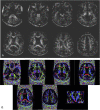Low-Field Magnetic Resonance Imaging: Its History and Renaissance
- PMID: 34292257
- PMCID: PMC8505165
- DOI: 10.1097/RLI.0000000000000810
Low-Field Magnetic Resonance Imaging: Its History and Renaissance
Abstract
Low-field magnetic resonance imaging (MRI) systems have seen a renaissance recently due to improvements in technology (both hardware and software). Originally, the performance of low-field MRI systems was rated lower than their actual clinical usefulness, and they were viewed as low-cost but poorly performing systems. However, various applications similar to high-field MRI systems (1.5 T and 3 T) have gradually become possible, culminating with high-performance low-field MRI systems and their adaptations now being proposed that have unique advantages over high-field MRI systems in various aspects. This review article describes the physical characteristics of low-field MRI systems and presents both their advantages and disadvantages for clinical use (past to present), along with their cutting-edge clinical applications.
Copyright © 2021 The Author(s). Published by Wolters Kluwer Health, Inc.
Conflict of interest statement
Conflicts of interest and sources of funding: The authors have no conflicts of interest to declare. This work was supported by JSPS KAKENHI grant number 19K08161, 19K17150, 18H02772, and JP16H06280; a research grant (2017-2020) from the Japanese Society of Neuroradiology; and AMED under grant number JP19lk1010025h9902.
Figures











References
-
- Sarracanie M, Salameh N. Low-field MRI: how low can we go? A fresh view on an old debate. Front Phys. 2020;8:172.
-
- Bilaniuk LT Zimmerman RA Wehrli FW, et al. . Cerebral magnetic resonance: comparison of high and low field strength imaging. Radiology. 1984;153:409–414. - PubMed
-
- Hittmair K Kramer J Rand T, et al. . Infratentorial brain maturation: a comparison of MRI at 0.5 and 1.5T. Neuroradiology. 1996;38:360–366. - PubMed
-
- Rand T Imhof H Turetschek K, et al. . Comparison of low field (0.2T) and high field (1.5T) MR imaging in the differentiation of torned from intact menisci. Eur J Radiol. 1999;30:22–27. - PubMed
Publication types
MeSH terms
LinkOut - more resources
Full Text Sources
Medical
Miscellaneous

